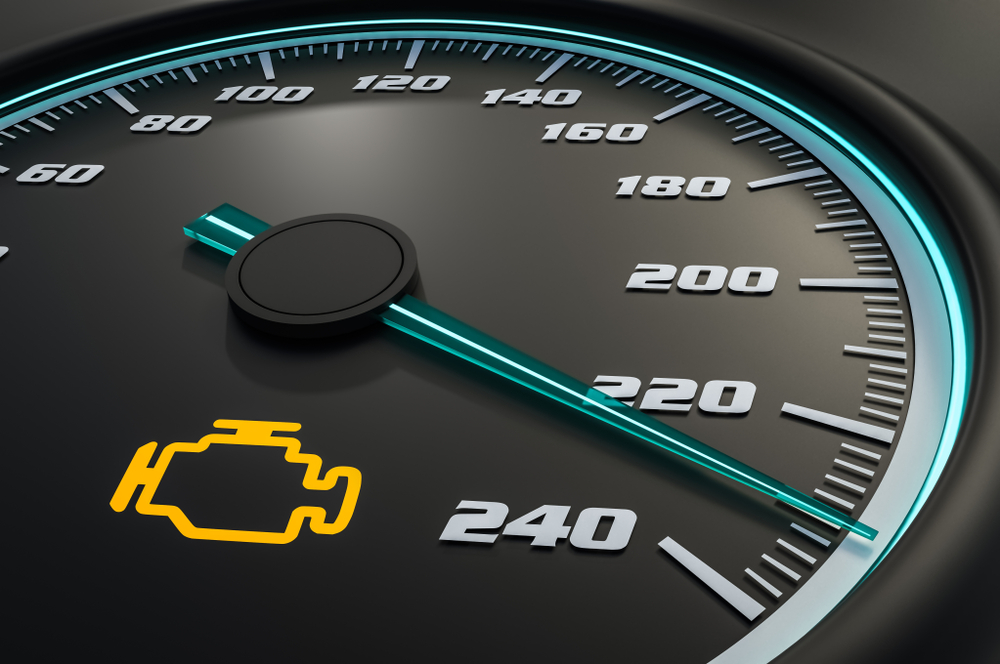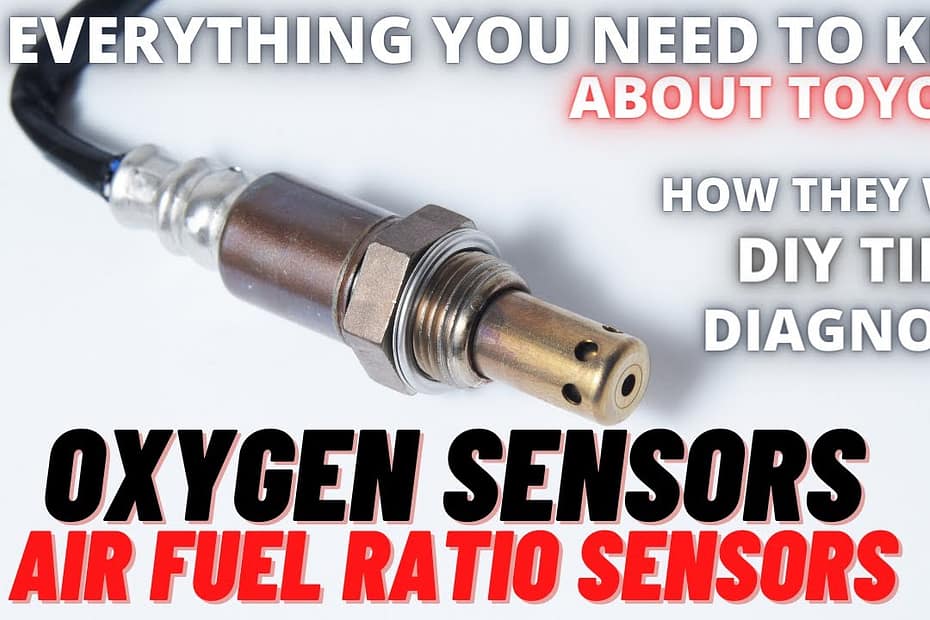An O2 sensor is a device that measures the level of oxygen in a vehicle’s exhaust gases. It is essential for ensuring optimal fuel efficiency and reducing harmful emissions.
The O2 sensor, also known as an oxygen sensor, plays a crucial role in the engine’s fuel management system. It measures the amount of oxygen in the exhaust gases and provides feedback to the engine control unit (ECU). By monitoring the oxygen level, the sensor helps the ECU adjust the fuel-air mixture for optimal combustion.
This process not only improves fuel efficiency but also reduces harmful emissions. Without a functioning O2 sensor, the engine may run too rich or too lean, resulting in reduced performance and increased pollution. Therefore, maintaining a properly functioning O2 sensor is vital for the overall performance and environmental efficiency of a vehicle.

Credit: m.youtube.com
The Basics Of O2 Sensor
When it comes to understanding the inner workings of an automobile, the oxygen sensor, commonly known as the O2 sensor, plays a crucial role. It is a vital component of the vehicle’s engine management system, responsible for measuring the amount of oxygen present in the exhaust gases.
What Is An O2 Sensor?
An O2 sensor, short for oxygen sensor, is a small device found in the vehicle’s exhaust system. Its primary function is to monitor and measure the oxygen levels in the exhaust gases. By doing so, it determines whether the engine is running efficiently or if it needs adjustments for optimal performance.
How Does An O2 Sensor Work?
The O2 sensor works by sending electrical signals to the vehicle’s engine control unit (ECU) based on the oxygen content in the exhaust gases. The sensor consists of a zirconia or titanium dioxide bulb fitted with electrodes. These electrodes are responsible for generating electrical signals based on the difference in oxygen levels inside and outside the sensor.
The O2 sensor constantly compares the oxygen concentration in the exhaust gases to that of the outside air. As the exhaust gases pass over the sensor, the difference in oxygen concentration triggers a response.
When the engine operates in a lean air-fuel mixture, indicating more oxygen in the exhaust gases, the O2 sensor generates a low voltage signal. On the other hand, in a rich air-fuel mixture, which signifies less oxygen, it produces a high voltage signal. These signals are then sent to the ECU, which uses the data to adjust the fuel injection and optimize the air-fuel mixture for better combustion.
It’s important to note that an O2 sensor may degrade over time due to contamination, wear, or buildup of debris. This can lead to inaccurate readings and potential engine performance issues. Therefore, regular maintenance and inspections are necessary to ensure the O2 sensor’s proper functioning.

Credit: www.cbac.com
Signs Of A Failing O2 Sensor
The O2 sensor monitors the amount of oxygen in a vehicle’s exhaust system. When it fails, signs such as decreased fuel economy, rough idling, and a persistent check engine light may appear. Proper maintenance is essential to ensure the sensor functions optimally.
Symptoms Of A Bad O2 Sensor
If you’re experiencing issues with your vehicle’s performance, it might be helpful to know the signs of a failing oxygen (O2) sensor. The O2 sensor plays a crucial role in the proper functioning of your vehicle’s engine, providing valuable feedback on the fuel-to-air ratio. When the O2 sensor starts to fail, it can lead to several noticeable symptoms.
Here are the key symptoms that may indicate a bad O2 sensor:
- Reduced fuel efficiency: A failing O2 sensor can disrupt the engine’s fuel management system, leading to decreased fuel efficiency. If you notice a sudden drop in your vehicle’s gas mileage, it’s worth considering the condition of the O2 sensor.
- Check engine light: One of the most common indications of a failing O2 sensor is the illumination of the check engine light on your vehicle’s dashboard. This warning light can signal a range of issues, including problems with the O2 sensor.
- Irregular engine idle: A faulty O2 sensor can cause the engine to idle roughly. You may notice your vehicle jerking or stalling when idling, which can be attributed to the incorrect fuel-to-air ratio caused by an O2 sensor problem.
- Higher emissions: An ineffective O2 sensor can lead to higher levels of harmful emissions being released into the environment. If your vehicle fails an emissions test or you notice a strong smell of fuel from the exhaust, it could be an indication of a failing O2 sensor.
- Difficult starting or slow acceleration: A malfunctioning O2 sensor can affect the engine’s air-fuel mixture, resulting in difficulties starting your vehicle or sluggish acceleration. If you experience these issues, it’s worth having your O2 sensor checked.
Consequences Of Ignoring O2 Sensor Issues
While the symptoms of a failing O2 sensor may not seem severe at first, ignoring these issues can have significant consequences for your vehicle’s performance and your wallet. Here are some of the potential consequences:
- Increased fuel consumption: A malfunctioning O2 sensor can cause your vehicle to consume more fuel than necessary, leading to higher fuel costs over time.
- Engine damage: Ignoring O2 sensor issues can result in an imbalanced fuel-to-air ratio, potentially causing damage to the engine and other related components.
- Catalytic converter failure: A failing O2 sensor can lead to an overworked catalytic converter, which is responsible for reducing harmful emissions. If left unaddressed, this can lead to the costly replacement of the catalytic converter.
- Failed emissions tests: A faulty O2 sensor can cause your vehicle to fail emissions tests, preventing its compliance with local regulations and potentially resulting in fines.
- Overall poor vehicle performance: Ignoring O2 sensor problems can lead to decreased engine power, rough idling, and reduced overall performance. Addressing these issues promptly can help maintain optimal vehicle performance.
By recognizing the signs of a failing O2 sensor and understanding the consequences of neglecting these issues, you can take proactive measures to ensure the smooth operation of your vehicle.
Replacing An O2 Sensor
When it comes to the efficient functioning of your vehicle, the O2 sensor plays a crucial role in monitoring the oxygen levels in the exhaust gases. Over time, this sensor may become worn out or malfunction, requiring replacement to ensure optimal engine performance and emission control. Here’s what you need to know about replacing an O2 sensor.
When To Replace An O2 Sensor?
If you notice a decline in fuel efficiency, rough idling, or an increase in tailpipe emissions, it may be time to consider replacing your O2 sensor. Additionally, a check engine light illuminated on the dashboard could indicate a potential issue with the sensor.
Diy Vs. Professional Replacement
Deciding whether to replace the O2 sensor yourself or seek professional help depends on your comfort level with car maintenance. While a DIY approach may save money, it’s essential to have the necessary tools and expertise. Professional replacement ensures precision and guarantees the correct sensor is installed for your vehicle’s make and model.
Types Of O2 Sensors
There are two main types of O2 sensors commonly used in vehicle emissions control systems – Wideband and Narrowband sensors.
Differences Between Wideband And Narrowband Sensors
- Wideband Sensor: Provides more precise and accurate air-fuel ratio readings.
- Narrowband Sensor: Offers basic air-fuel ratio monitoring functionality.
Advantages And Disadvantages Of Each Type
| Wideband Sensor | Narrowband Sensor |
|---|---|
|
|
|
|
O2 Sensor Maintenance
The O2 sensor, also known as the oxygen sensor, plays a crucial role in ensuring optimal engine performance by monitoring the oxygen levels in the exhaust gases. Proper maintenance of the O2 sensor is essential to maximize its lifespan and efficiency.
Tips For Extending O2 Sensor Lifespan
- Regularly inspect and replace the O2 sensor as per manufacturer’s recommendations.
- Use high-quality fuel and avoid excessive idling to reduce sensor wear.
- Keep the engine properly tuned to prevent issues that can affect the O2 sensor.
Routine O2 Sensor Inspection
- Check for any signs of corrosion or physical damage on the sensor.
- Verify proper connections and wiring to ensure accurate readings.
- Perform regular diagnostic scans to monitor sensor performance.

Credit: www.cars.com
Frequently Asked Questions For What Is O2 Sensor
What Happens When An O2 Sensor Goes Bad?
When an O2 sensor goes bad, it can cause decreased fuel efficiency, rough idling, and increased emissions. It may trigger the check engine light and affect the engine’s performance.
How Much Does A O2 Sensor Cost?
The cost of an O2 sensor varies, but it typically ranges from $50 to $200.
What Does An O2 Sensor Do?
An O2 sensor measures the oxygen levels in your vehicle’s exhaust system to help the engine adjust fuel mixture for optimal performance and reduced emissions.
Can You Drive With A Bad O2 Sensor?
Driving with a bad O2 sensor is not recommended. It can lead to decreased fuel efficiency and potential engine damage.
Conclusion
Understanding the role of an O2 sensor is essential for maintaining vehicle performance. Whether it’s detecting oxygen levels or ensuring fuel efficiency, this small yet crucial component plays a significant part in your car’s overall function. By grasping its function and importance, you can make informed decisions about your vehicle’s maintenance and repairs.
